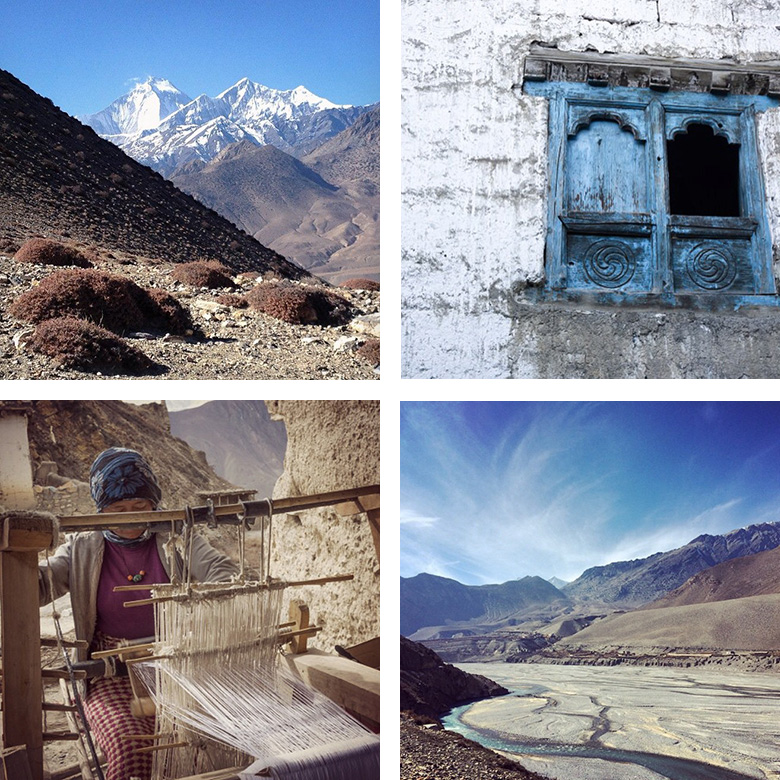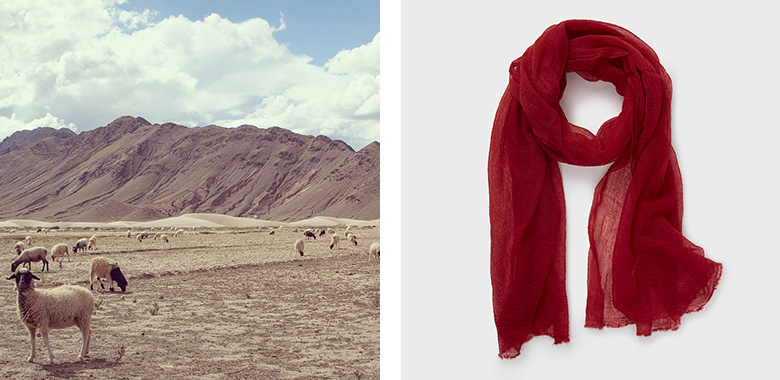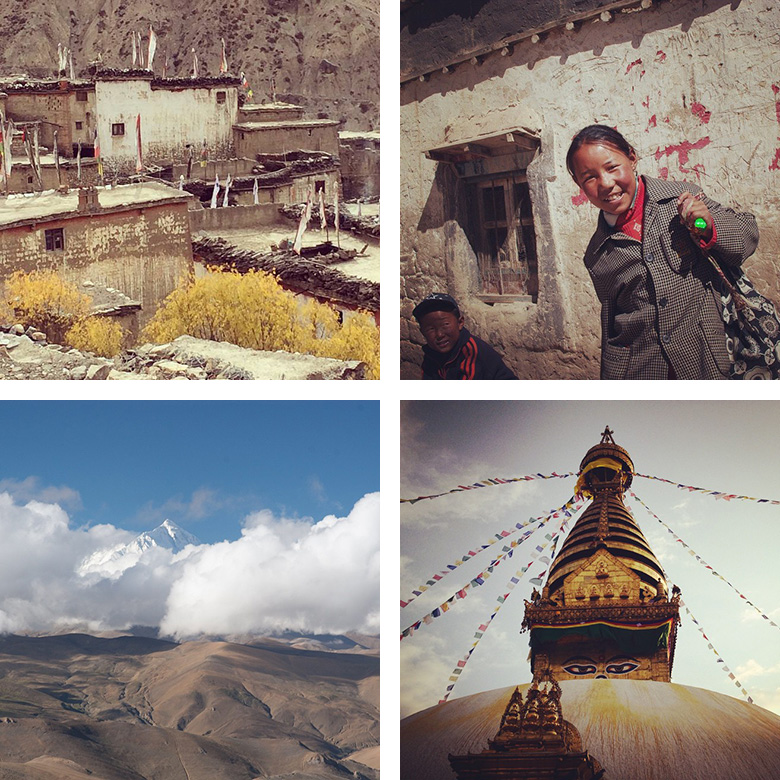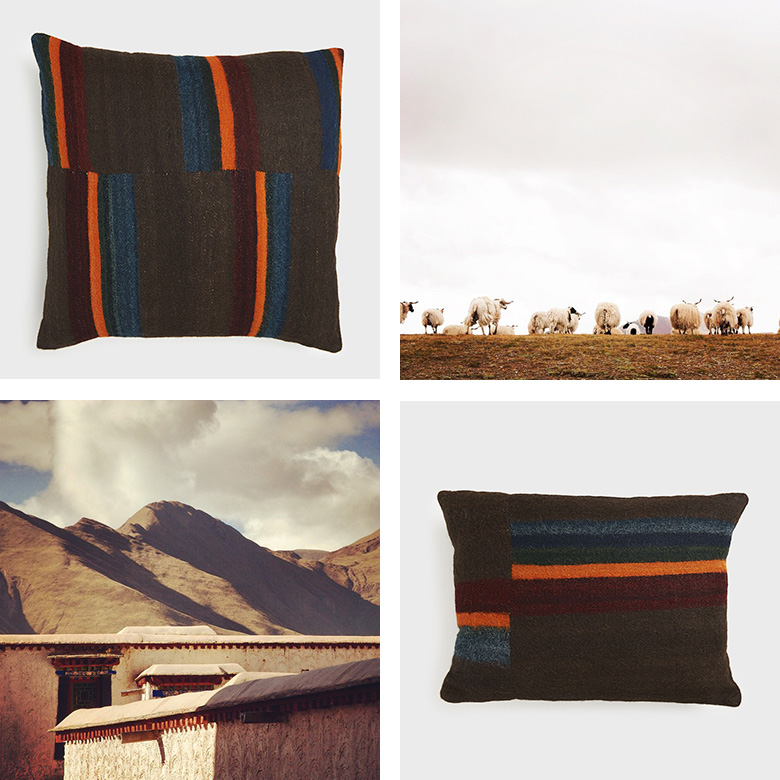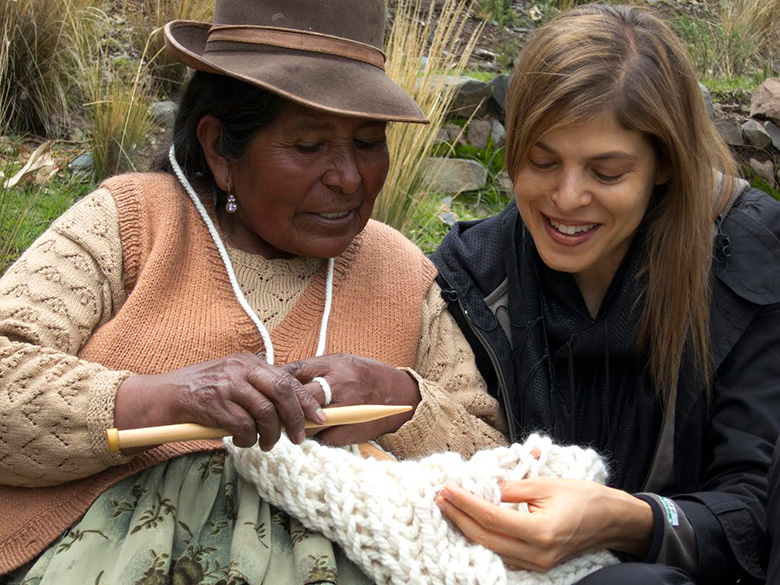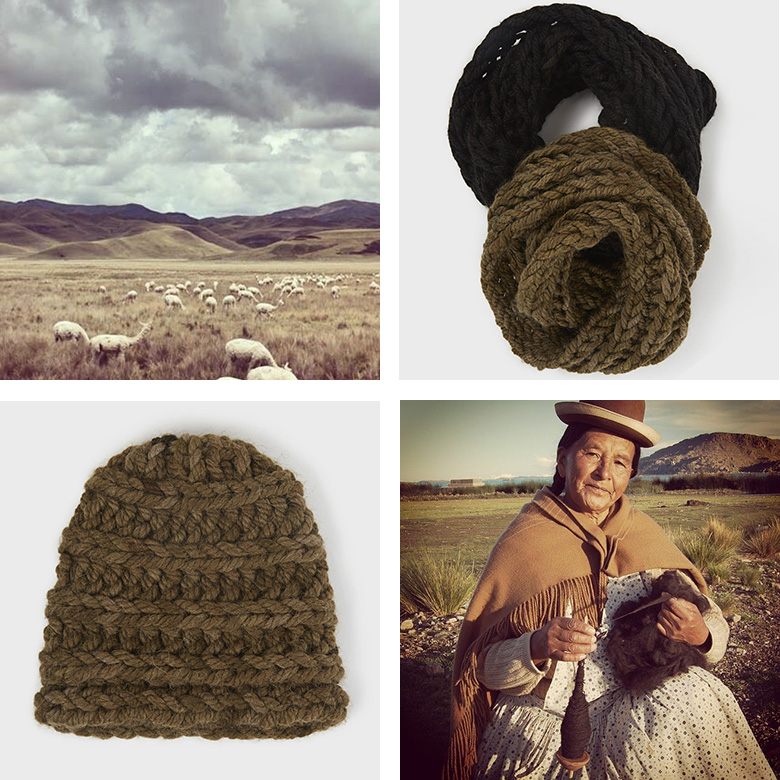Susan Easton : FROM THE ROAD
Susan Easton is only a few days from a four-month trip overseas—from Nepal to Abu Dhabi to India and then back to Nepal—but you’d never guess it from her remarkable calm. Whether collaborating with Nepalese weavers on incredibly light scarves made of handwoven cashmere or crafting pillows from traditional yak blankets, Easton displays incredible facility as both a designer and an advocate for artisanal practices. “To be honest, everywhere I go I’ve encountered incredible traditions,” she says. Below, the best of what she’s seen on her wide-ranging travels.
Scenes from Susan Easton’s Himalayan Journey. Clockwise from top left,
“I didn’t expect to experience so many micro climates up in Mustang.” Blue shutter inspiration.
Tibetan weaver working on her traditional loom. Incredible views.
A thin suspension bridge with prayer flags spanning the riverbed. A decorated yak.
Working on handspun yak yarn. Blue shutters on a traditional Tibetan home. In the front, they are drying yak dung to use as fuel.
Temperatures get extremely cold and there are not many trees to use for making a fire at this altitude.
______
“The Vayu scaves are hand woven,
and the weft in each scarf has over 2000 strands.
I’ve never seen that level of weaving
anywhere in the world. It’s the thinnest handwoven
cashmere available anywhere in the world.
The fact that they can do that,
under the conditions that they’re producing
them, is amazing.”

Vayu scarves in six different shades of red available at our Pop up Shop at Atelier Courbet
______
We produced this scarf for DARA in six different shades of red—three are made with natural dyes, from natural herbs. When I got to Nepal, one of the things I was really excited about was the natural dyes; I took it for granted we’d be able to do it—it’s just so entrenched in their heritage. But many of the natural dyers have closed up shop, so I went on a mission to try to help reinvigorate that. We started doing natural dyes with this natural dyer—we had to reteach people at the weaving center how to do those dyes, but we ended up doing these amazing colors.
Natural dyeing is part art and part chemistry. There’s a 20% color variance from batch to batch—that’s just life. You’re not going to get the exact same color.
A traditional Tibetan village in lower Mustang. Getting ready for school.
Gorgeous Mt. Everest. The majestic stupa at Swayambhunath.
______
“For the Dopa pillows,
I actually take the blankets that are
woven up in Dopa [in northern Nepal]
and turn them into pillows”.
The blankets are made using generations-old traditions. They use hand-spun yak fibers, which are woven into these small strips, and them matched up to each other. The stripes on every pillow matches up differently.
Dopa pillows made from traditional blankets. Yaks. Tibetan architecture.
______
“Anytime I meet anyone interesting,
I ask them for three experiences I need to have,
or three people I have to meet.”
Susan Easton with a weaver in Peru.
______
The Peruvian pieces in the collection are done with natural dyes. I’ve long had an infatuation with natural dyes. They’re not organic, so it’s about finding how to make everything as natural as possible. Using natural dyes means that you don’t achieve a totally solid color—it goes from a light color to a darker one.
The dyers in Peru took a swimming pool in an abandoned elementary school, and since it wasn’t full, they use it to store the dyeing vats.
Freshly shaved alpaca in Peru. Josefina scarves and hats . The weaver, Saturnina, with her handspun alpaca.
Shop FROM THE ROAD
Travel notes: Susan Easton’s friend, Kim Bannister, founder of Kamzang Journeys offers trips to the most remote regions within the Himalyans. Steeped in cultural insider experiences, all of her treks benefit the local communities–helping to preserve their traditions and customs.

